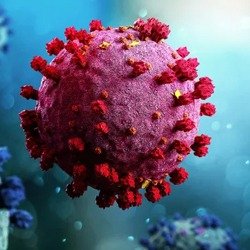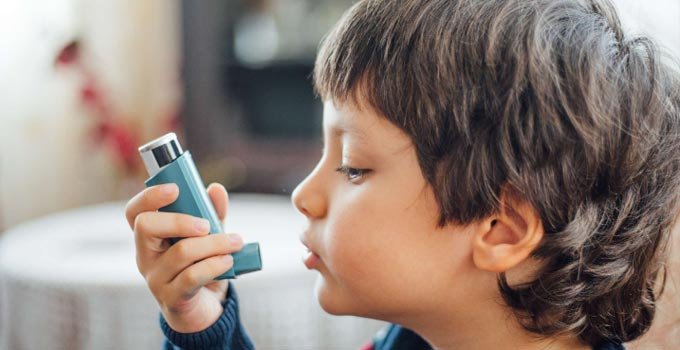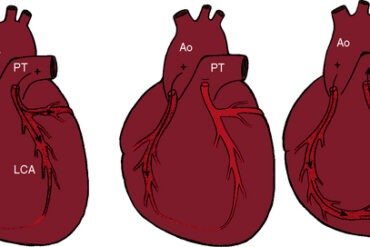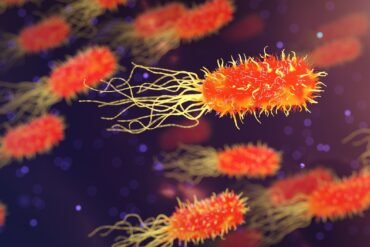Symptoms of Neonatal Hyperbilirubinemia (Jaundice)
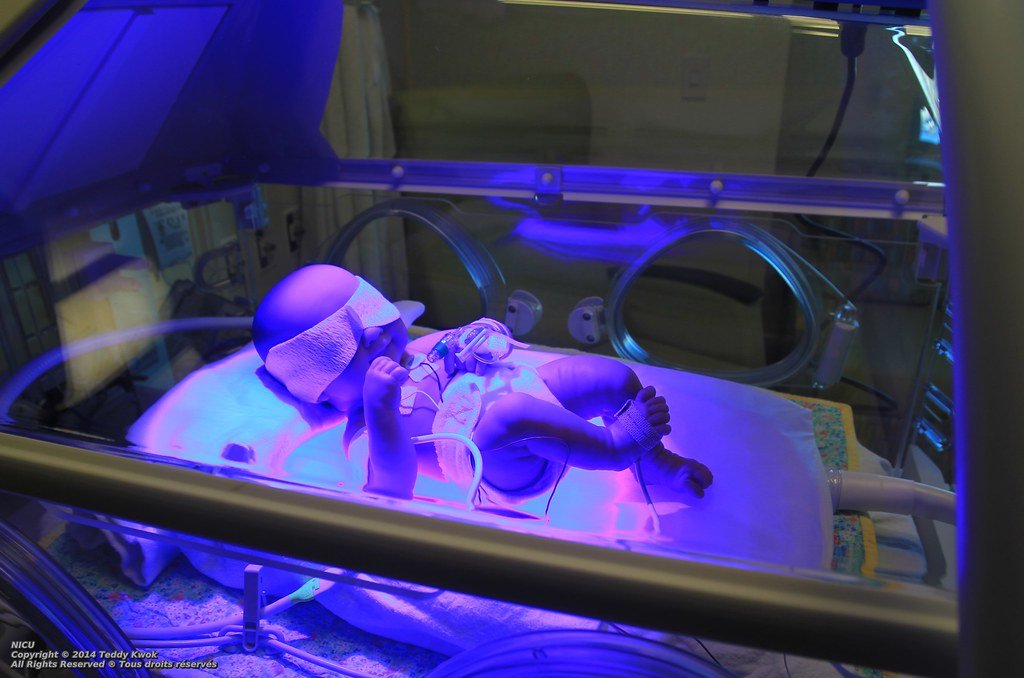
Table of Contents
- Overview of Neonatal Hyperbilirubinemia
- Causes of Neonatal Jaundice
- Diagnosis and Evaluation of Hyperbilirubinemia
- Complications Associated with Jaundice in Newborns
- Treatment Options for Neonatal Hyperbilirubinemia
Overview of Neonatal Hyperbilirubinemia
Neonatal hyperbilirubinemia, commonly known as jaundice, is a condition characterized by the yellow discoloration of a newborn’s skin and eyes. It occurs when there is an excessive buildup of bilirubin in the baby’s blood. Bilirubin is a yellow pigment produced during the normal breakdown of red blood cells. When the liver is unable to process bilirubin effectively, it accumulates in the body, causing jaundice.
Jaundice is a common condition in newborns and usually appears within two to four days after birth. Approximately 60% of full-term babies and 80% of premature babies experience jaundice to some degree. While most cases of jaundice in newborns resolve without treatment, severe or prolonged jaundice can lead to complications, such as brain damage.
Several factors contribute to the development of neonatal hyperbilirubinemia. In newborns, the liver is still maturing and might not be able to process bilirubin efficiently. Additionally, the breakdown of red blood cells is higher in newborns compared to older individuals. Other risk factors for jaundice include prematurity, breastfeeding difficulties, blood type incompatibility between the mother and baby, and certain medical conditions such as G6PD deficiency.
The main symptom of neonatal hyperbilirubinemia is the yellowing of the baby’s skin, typically starting on the face and spreading to the rest of the body. The yellow discoloration may be more apparent in natural light. Other signs and symptoms of jaundice include a yellowing of the eyes, pale-colored stools, dark urine, lethargy, poor feeding, and a high-pitched cry.
It is important to monitor the bilirubin levels in newborns to prevent complications. A blood test called a bilirubin test is used to measure the amount of bilirubin in the baby’s blood. Treatment options for neonatal hyperbilirubinemia include phototherapy, which involves exposing the baby’s skin to special lights that help break down the bilirubin, and in severe cases, exchange transfusion. In exchange transfusion, a small amount of the baby’s blood is replaced with donor blood that doesn’t have excess bilirubin.
In conclusion, neonatal hyperbilirubinemia is a common condition in newborns characterized by the yellowing of the skin and eyes. While most cases resolve without treatment, severe or prolonged jaundice can lead to complications. It is crucial to monitor bilirubin levels and seek medical attention if jaundice persists or worsens.
- Neonatal hyperbilirubinemia, also known as jaundice, is the yellow discoloration of a newborn’s skin and eyes.
- Most cases of jaundice in newborns resolve without treatment, but severe or prolonged jaundice can lead to complications.
- The main symptom of neonatal hyperbilirubinemia is yellowing of the skin, along with other signs such as pale-colored stools and dark urine.
- A bilirubin test is used to measure bilirubin levels in newborns.
- Treatment options include phototherapy and exchange transfusion in severe cases.
Causes of Neonatal Jaundice
Neonatal jaundice, also known as hyperbilirubinemia or jaundice, is a common condition that affects newborns. It occurs when there is an excess of bilirubin in the baby’s blood. Bilirubin is a yellow pigment produced during the normal breakdown of red blood cells. However, high levels of bilirubin can lead to yellowing of the skin and eyes, which are the hallmark symptoms of neonatal jaundice. Various factors can contribute to the development of this condition:
- Physiological jaundice: The most common cause of neonatal jaundice is physiological jaundice, which occurs in more than half of all newborns. It typically appears within the first week of life and usually resolves on its own without any treatment. This type of jaundice is caused by the immaturity of the baby’s liver, which is unable to efficiently process bilirubin.
- Breast milk jaundice: Some breastfed babies may develop jaundice due to substances present in breast milk that can affect the liver’s ability to process bilirubin. However, this type of jaundice is rare and generally resolves on its own after a few weeks. It is important to continue breastfeeding as the benefits outweigh the risks.
- Blood type incompatibility: If the mother and baby have different blood types, such as Rh or ABO incompatibility, it can lead to an increased level of bilirubin. This occurs when the mother’s antibodies attack the baby’s red blood cells. In severe cases, a blood transfusion or other treatments may be necessary to reduce bilirubin levels.
- Infection: Some infections, such as urinary tract infections, sepsis, or hepatitis, can cause jaundice in newborns. These infections can affect the functioning of the liver and increase bilirubin production.
- Genetic disorders: Certain genetic conditions, such as Gilbert’s syndrome or Crigler-Najjar syndrome, can result in higher levels of bilirubin in the blood. These conditions are rare but may require specialized medical care.
It is important to note that not all cases of neonatal jaundice require treatment. However, if the levels of bilirubin become too high or if there are other associated symptoms, medical intervention may be necessary. Treatment options may include phototherapy, where the baby is exposed to specific wavelengths of light to help break down bilirubin, or in severe cases, a blood exchange transfusion to replace the baby’s blood with donor blood.
Parents should closely monitor their newborn for any signs of jaundice and seek medical advice if they suspect their baby might be affected. Early detection and appropriate management can help prevent complications and ensure the well-being of the baby.
Diagnosis and Evaluation of Hyperbilirubinemia
Diagnosing and evaluating hyperbilirubinemia, also known as neonatal jaundice, is crucial to ensure the well-being of newborn babies. In this section, we will discuss the methods and tests used by healthcare professionals to diagnose and evaluate this condition.
- Physical Examination: A healthcare provider will conduct a thorough physical examination of the baby to assess the level of jaundice. They will examine the skin, eyes, and mucous membranes for the presence of a yellowish tint. Additionally, they may check the baby’s liver and spleen for any abnormalities.
- Bilirubin Level Measurement: The most common method used to evaluate hyperbilirubinemia is measuring the baby’s bilirubin levels. This can be done through a blood test or by using non-invasive techniques such as transcutaneous bilirubinometry (TCB) or bilirubinometers. These tests provide a quantitative measurement of bilirubin in the blood or skin, respectively.
- Consideration of Risk Factors: Healthcare professionals take into account various risk factors to determine the need for further evaluation and treatment. Factors such as the baby’s gestational age, birth weight, family history of jaundice, and the rapidity of bilirubin rise are considered in order to assess the severity and potential complications of the condition.
- Measurement of Total Serum Bilirubin (TSB): TSB levels help determine the appropriate management of hyperbilirubinemia. If the levels are above the established treatment threshold, further evaluation and intervention may be necessary.
- Assessment of Kernicterus Risk: In certain cases, especially when the bilirubin levels are significantly elevated, healthcare providers may conduct additional tests to assess the risk of developing kernicterus, a severe and potentially life-threatening condition caused by high levels of bilirubin in the brain.
- Monitoring and Follow-up: For babies with mild to moderate hyperbilirubinemia, close monitoring is essential. Healthcare providers may recommend follow-up evaluations to ensure that the bilirubin levels are decreasing and that the condition is resolving without complications. In some cases, phototherapy or other treatments may be initiated.
Early diagnosis and evaluation of hyperbilirubinemia are crucial for successful management and prevention of potential complications. It is important for parents to promptly seek medical attention if they observe any signs of jaundice or have concerns about their baby’s condition.
Complications Associated with Jaundice in Newborns
Jaundice, also known as neonatal hyperbilirubinemia, is a common condition in newborns that occurs when there is a buildup of bilirubin in the bloodstream. While jaundice is usually harmless and resolves on its own, there can be complications associated with high levels of bilirubin in a baby’s body. It is important to monitor and manage jaundice to ensure the well-being of the newborn.
- Kernicterus: High levels of bilirubin can lead to a rare but serious condition called kernicterus. This condition occurs when bilirubin levels are extremely high and the substance starts accumulating in the brain. Kernicterus can cause permanent brain damage, resulting in cognitive and developmental delays, hearing loss, and movement disorders.
- Acute Bilirubin Encephalopathy: If jaundice is severe and left untreated, it can lead to acute bilirubin encephalopathy, a condition characterized by neurological abnormalities. Symptoms include poor feeding, high-pitched crying, lethargy, and arching of the back. Prompt treatment is crucial to prevent further complications.
- Poor Weight Gain: Newborns with severe jaundice may experience feeding difficulties, leading to poor weight gain. When bilirubin levels are high, babies may become sleepy and less interested in feeding, which can hinder their growth and development.
- Sepsis: Infants with severe jaundice are also at an increased risk of developing sepsis, a potentially life-threatening infection. High bilirubin levels can weaken the immune system, making the baby more susceptible to bacterial or viral infections.
- Long-term Developmental Issues: Although rare, some studies have suggested a possible link between high bilirubin levels and long-term developmental issues. It is essential to manage and treat jaundice to minimize the risk of potential long-term effects on the baby’s growth and neurological development.
If your newborn is exhibiting symptoms of jaundice, such as yellowing of the skin and eyes, it is important to seek medical attention. Healthcare professionals will monitor bilirubin levels and determine the most appropriate treatment plan, which may include phototherapy or, in severe cases, an exchange transfusion to remove excessive bilirubin from the blood.
Remember, jaundice is a common condition in newborns, and with proper monitoring and management, the associated complications can be reduced or prevented. Early detection and timely intervention are key to ensuring the well-being and healthy development of your baby.
Treatment Options for Neonatal Hyperbilirubinemia
When a newborn develops neonatal hyperbilirubinemia, commonly known as jaundice, it is important to seek appropriate treatment to prevent potential complications. The treatment options will depend on the severity of the condition, the underlying cause, and other factors. Here are some common treatment approaches for neonatal hyperbilirubinemia:
- Phototherapy: This is the most common treatment for jaundice in newborns. The baby is placed under special blue lights that help break down the excess bilirubin in the skin. Phototherapy is often effective and has minimal side effects.
- Exchange Transfusion: In severe cases of hyperbilirubinemia, where phototherapy alone is not sufficient, an exchange transfusion may be necessary. This procedure involves removing a small amount of the baby’s blood and replacing it with fresh donor blood. Exchange transfusion helps rapidly lower bilirubin levels but carries some risks and is typically used as a last resort.
- Medication: Certain medications, such as phenobarbital, may be prescribed in some cases to aid in the excretion of bilirubin from the baby’s body. However, medication is not always the first-line treatment and is usually reserved for specific situations.
- Frequent Feeding: Breastfeeding or formula feeding on a regular schedule helps increase bowel movements, which aids in eliminating bilirubin from the system. Ensuring that the baby is well-fed and hydrated can help prevent and treat jaundice.
- Monitoring: Regular monitoring of the baby’s bilirubin levels is essential to determine the effectiveness of the treatment and make any necessary adjustments. This may involve blood tests or using non-invasive devices to measure bilirubin levels in the baby’s skin.
It is important to note that the choice of treatment should be determined by a healthcare professional after a thorough evaluation of the baby’s condition. Early detection and prompt treatment of neonatal hyperbilirubinemia can prevent complications and ensure the well-being of the newborn.

